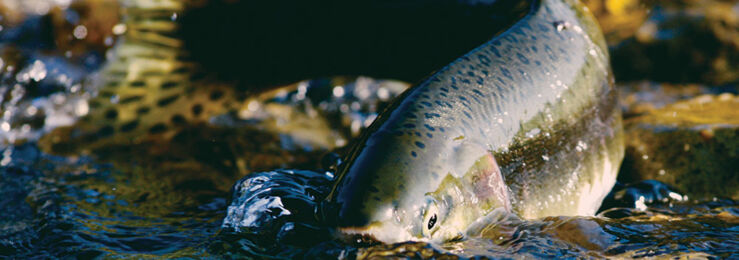
Need inspiration? Look no further than the approximately 12,000 Chinook salmon who defied the odds of the drought and swam from the Pacific Ocean to the Mokelumne River this fall.
Waters were low, warm and stagnant—a lethal formula for fish returning to natal streams to spawn. This year, the American River, just one river north of the Mokelumne, saw a below-average return of fall-run Chinook salmon. Yet, the Mokelumne’s salmon population fared well thanks to a little help.
For the fourth consecutive year, the number of Chinook salmon returning to the Mokelumne River, where EBMUD gets nearly all its water, exceeded 12,000 fish, nearly tripling our long-term average. These healthy returns add up to a healthy river system.
EBMUD staff tested creative ways to provide good migration conditions by mimicking rains storms using pulses of water downstream. These simulated waves guided fish home—like GPS navigation. One of our partners, Woodbridge Irrigation District, in Lodi, also on Mokelumne, changed its dam operations to increase and deliver extra pulses.
To deal with higher water temperatures, EBMUD biologists turned to Pardee Reservoir, the heart of EBMUD’s water supply. Pulling cold water from the bottom of the reservoir created ideal spawning temperatures in the Mokelumne River.
Now, all eyes are set on ensuring the juvenile salmon produced from these 12,000 adults survive to make it back to the Mokelumne in 3 to 5 years.
According to EBMUD’s Supervising Fisheries Biologist Michelle Workman, EBMUD is gearing up to handle a dry year, and is prepared if conditions worsen.
“A lot happens to ensure we have a good run,” Workman said. “Luckily, we have a few tricks up our sleeve to meet the life stage needs of fish.”